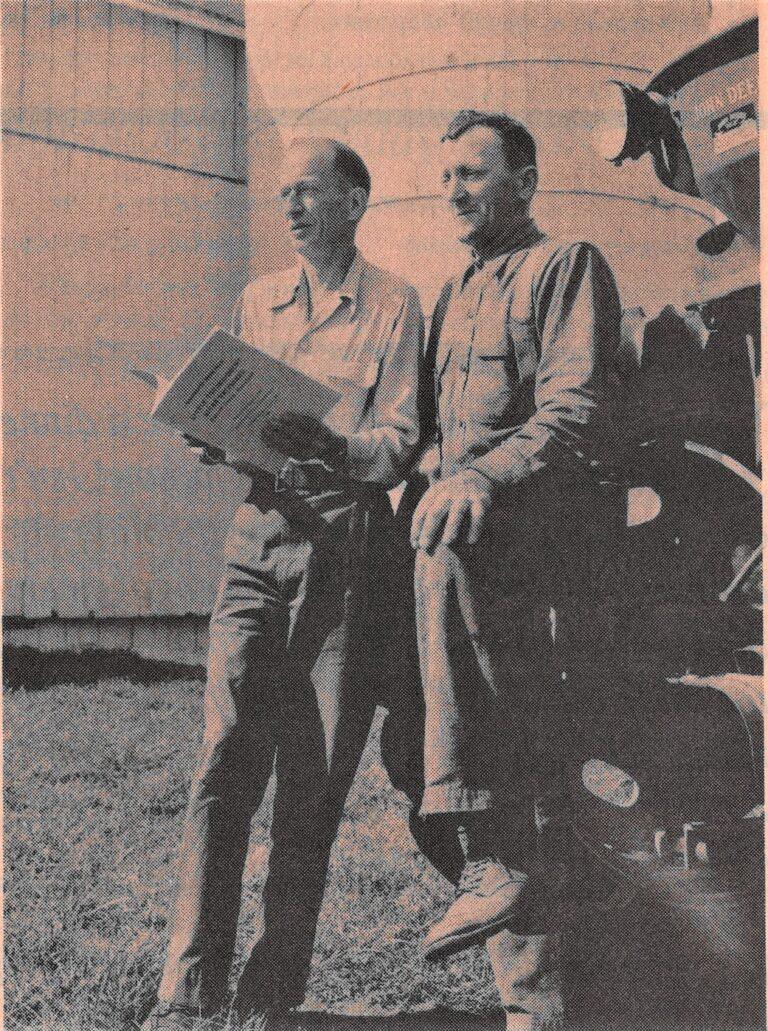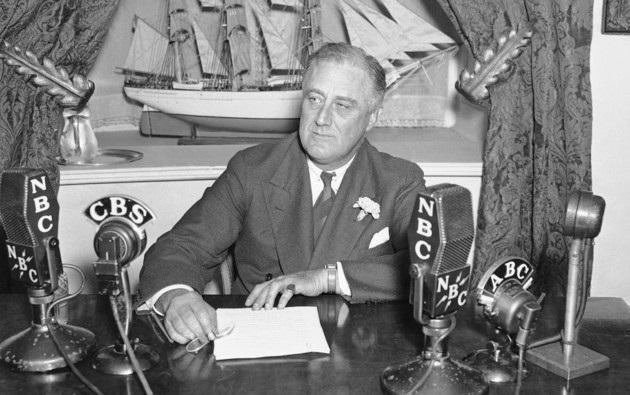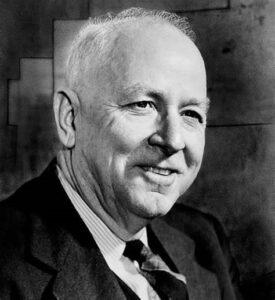The History of the Soil Conservation District
The following article appeared in “The Republican” newspaper on Thursday, January 14, 1993. This article explains the history of the Soil Conservation District so well, that we couldn’t word it any better.
Garrett Soil Conservation District Celebrates 50th Anniversary This Year and Looks Back At the Past
The Republican Newspaper, January 14, 1993
The “Dust Bowl” days of the 1930’s saw wind erosion that was so bad that dust from the West was blown across half the United States: over Maryland, Washington, D.C., and on out to sea. Prior to the Dust Bowl, there was only minimal national attention given to sediment and erosion control.
In 1933, Dr Hugh Hammond Bennett became the Director of the Soil Erosion Service, a new agency in the Department of Interior. In 18 months of operation, 41 soil and water demonstration projects and 50 Civilian Conservation Cops Camps were assigned to erosion control work under his direction.
His position provided Bennett, a long-time advocate of conservation, a forum to testify before Congressional committees, and he effectively did this through his use of plain talk and theatrical drama. One example was his testimony before a Senate committee on a House bill which proposed to set up the Soil Conservation Service as a permanent agency.
This was in March of 1935, and the second great dust storm had begun. From newspaper, radio, and telephone accounts, Bennett was able to predict when the clouds of dust would arrive in Washington, D.C. He dragged out his testimony till the clouds arrived, darkening the sky and filling the air with grit — a bit of Texas for every congressman to grind between his teeth and a bit of Oklahoma to redden their eyes. This soil, swirling in from a 2,000 mile journey, told the committee that this man Bennett was right and that something must be done immediately.
On April 27, 1935, Congress passed, and President Roosevelt signed Public Law 46, the first soil conservation law in the history of the world. This was the beginning of the Soil Conservation Service and the first time that soil conservation was national policy.

Two Conservation District Firsts – Bill Nace, left the first SCS District Conservationist in the county, who was also the first District Manager for the Garrett Soil Conservation District and Foster Yost, who served as the first chairman of the Garrett Soil Conservation District. Yost served on the Board of Supervisors from 1943 to 1968.

Franklin D. Roosevelt addresses the nation the day after signing Public Law 74-46 that created the Soil Conservation Service (NRCS).
On February 27, 1937, President Roosevelt sent a letter the governors of all the states. He urged them to adopt the Standard Soil Conservation District Act, which was attached to the letters, and encouraged its passage in their respective legislatures.
“My Dear Govenor,” he wrote, “The dust storms of the past few years have underscored the importance of programs to control soil erosion. I need not emphasize to you the seriousness of the problem and the desirability of our taking effective action as a nation and in the several states, to conserve the soil as our basic asset The nation that destroys its soil destroys itself…”
The new law provided for the formation of “soil conservation districts.” With amazing foresight, the founding fathers of that time recognized the fundamental principal that for a conservation program to be successful, it must be run by local people who own the land. Today, there are over 3,000 districts across the nation working with land-owners to encourage them to adopt and follow conservation practices.
Maryland passed its “Soil Conservation Law” in 1937, which contained organizational procedures to be followed in the formation of districts in Maryland. A county referendum, which was held on July 26, 1943, indicated that the residents of the county favored the creation of a district. As a result of the referendum, a Certificate of Organization was issued to the Garrett Soil Conservation District by the Maryland Secretary of State on September 21, 1943. Districts are legal political subdivisions of the state. Like most soil conservation districts in the state, Garrett has the same boundaries as the county.
The local governing ody of soil conservation districts is called “District Board of Supervisors.” The first Garrett District Board of Supervisors included Foster Yost, Harry Porter, John Beachy, Emerson Bishoff and Paul Friend. The Garrett District was served from Allegany County by Bill Nace until the spring of 1944 when an office was opened in Oakland on the second floor of the McLaughlin Building. John Carter was the Extension agent at that time and assisted Bill Nace in the formation of the district.
Sometimes people became confused between the Garrett Soil Conservation District, which as pointed out is a “local unit of government” and the Soil Conservation Service. The Soil Conservation Service is one of the branches or agencies of the United States Department of Agriculture, which of course is a federal agency. (Today the Soil Conservation Service is called the Natural Resources Conservation Service or NRCS).
The Soil Conservation Service was created by Public Law 74-46 which was signed by President Roosevelt on April 27, 1935. SCS was the federal government’s way of providing help to the local soil conservation districts. With the federal government providing research, technical, educational, and financial assistance through the Soil Conservation Service, conservation districts flourished and made great progress in getting landowners and users to adopting land use changes necessary for controlling and reventing erosion.
That important partnership between USDA and local soil conservation districts exists to this day. (The NRCS is still part of the Soil Conservation District).

Dr. Hugh Hammond Bennett helped America understand the need for soil conservation, and was responsible for motivating the president to create the Soil Conservation Service.
The Garrett District works with a host of other agencies and departments in carrying many of the conservation programs. We have always maintained a close relationship with other agricultural agencies such as the Agricultural Stabilization and Conservation Service and the Garrett County Extension Service. It is important to note that the Garrett District will assist any landowner or user in the county who has a resource problem. The district does not solely serve agriculture.
The Garrett Soil Conservation District will be celebrating its 50th anniversary during 1993. The annual cooperators’ dinner will not be held this year in lieu of a special banquet commemorating the District’s beginning in 1943. A display of early photographs and related memorabilia is planned along with several feature articles pertaining to various programs of the District.